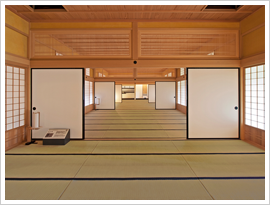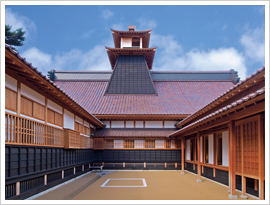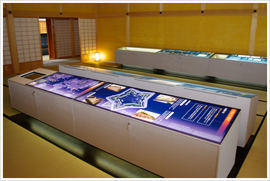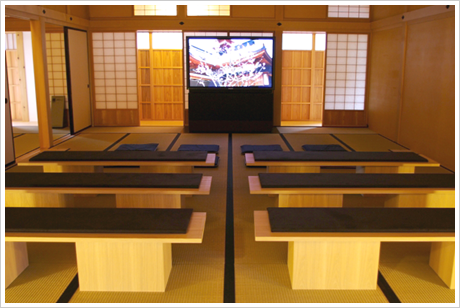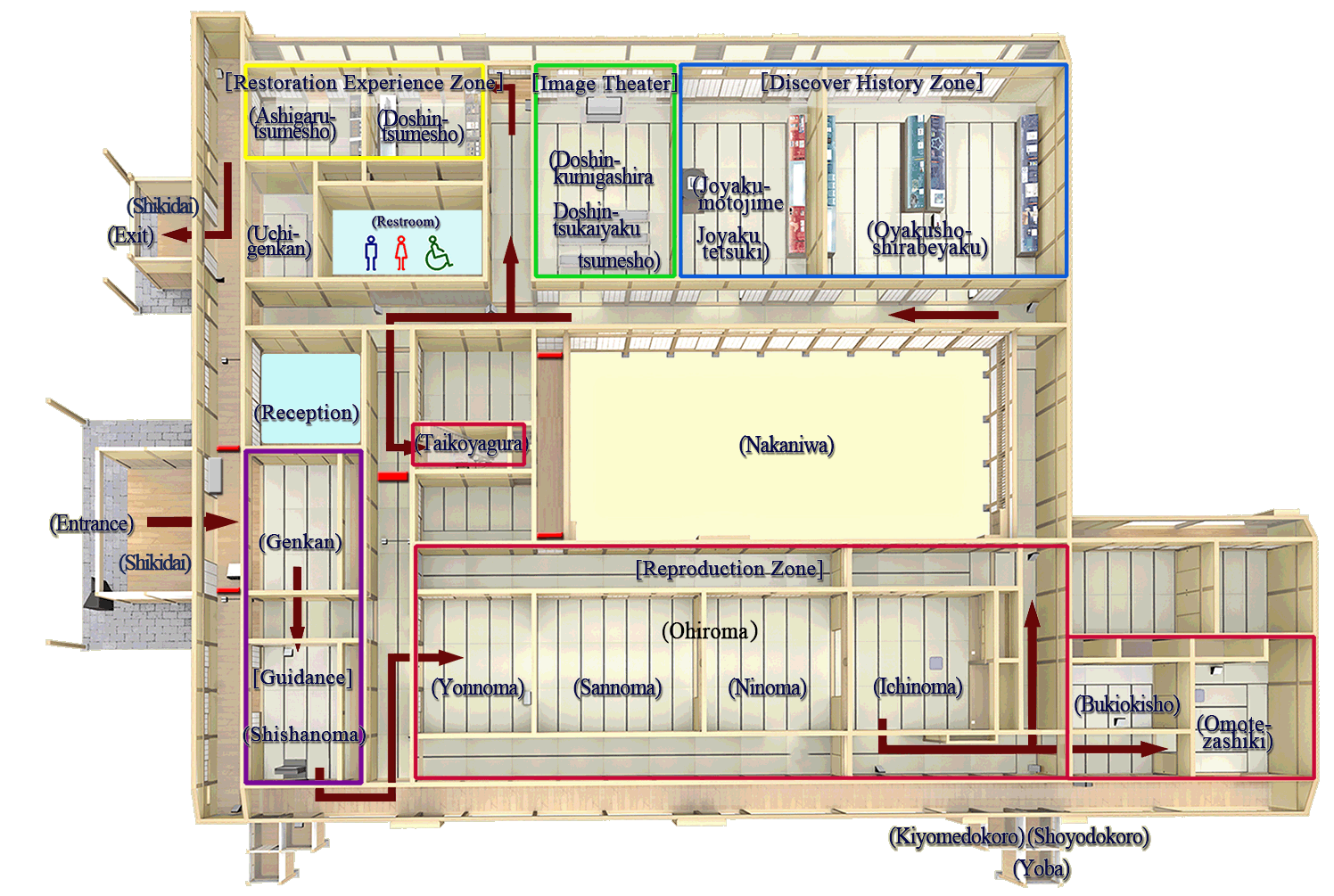
The restored Magistrate’s office is approximately 1,000 ㎡ of the core part, which covers one third of the entire building, as shown in two remained old photographs.
The construction began in 2006. The same materials and construction methods as those used for the original building were applied as much as possible. Hiba arborvitae, zelkova, cedar, and pine timber was utilized depending on purposes such as pillars, ceiling boards, beams and floors. Also, Japanese traditional construction techniques for old wooden structures such as roof tiles, clay walls, and lacquer work were employed.
Entering the building, you will go through the large hall of Reproduction Zone consisting of four rooms where a total of 72 tatami mats are laid down. You will find Japanese traditional architectual styles in the sliding doors, the paper doors, the decorative nailhead covers installed at the horizontal timber, the staggered shelves with lacquer work, the alcove and the tsukeshoin (built-in desk).
From the hall, you will see some tall red pine trees growing in the southern garden. They were planted there when the original Magistrate’s office was built about 150 years ago, and they are very important national properties.
Looking up through the lattice window at the connecting corridor, you will see the drum tower. The hour was told by drumming in those days.
Then, there are two rooms called Discover History Zone. The graphic panels about the Goryokaku fort and the Magistrate’s Office are put on display. You can see the structure beneath the tiled roof as well as the huge pine beam.
In Image Theater, a 17-minute film about the restoration of the Hakodate Magistrate's Office is shown on the 65-in screen. Although it does not have explanation in foreign languages, you could take a look of the traditional craftsmanship just by watching the image.
There are still more rooms with interests: a room to show about what the restoration works were like with a one-fiftieth-scale model created for them on display, and another to show various ways of wood joints.



